


For Dell'Arte Opera Ensemble's world premiere of the opera Princess Maleine at La MaMa, Evolve was brought in to design and create puppets representing a kite that could be "flown" dynamically around the stage, and a large water dog who could interact dramatically with the singers as a silent character.
This beautiful production featured music by Whitney George & Curiosity Cabinet, libretto and direction by Bea Goodwin, choreography by Lauren Hlubny, costumes by Claire Townsend, lighting by Dante Olivia Smith and set by Joo Hyun Kim. Production photos are by Brian E. Long.
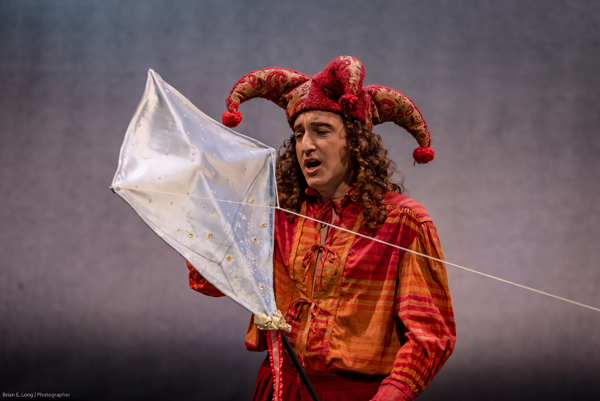
The Fool (Jeffrey Mandelbaum) sings about the soul of the kite while serving as its puppeteer. Photo by Brian E. Long.
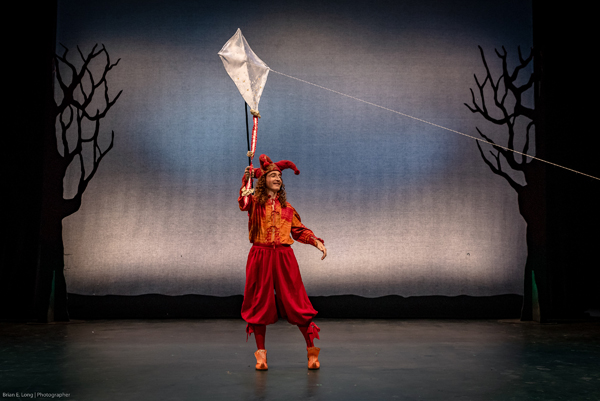
We used a four-foot rod with a flexible connection to the kite's center of balance to give the singer the ability to raise the kite as high as possible while still retaining control. Photo by Brian E. Long.
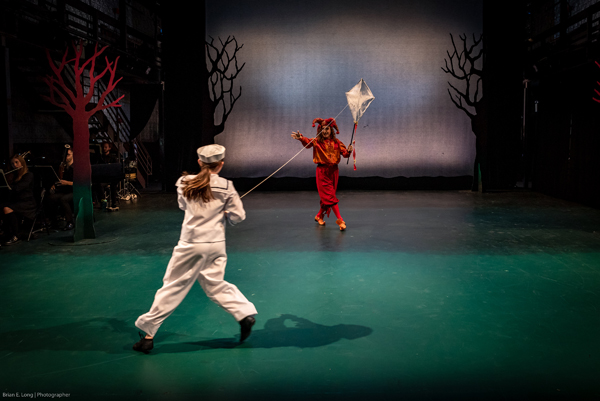
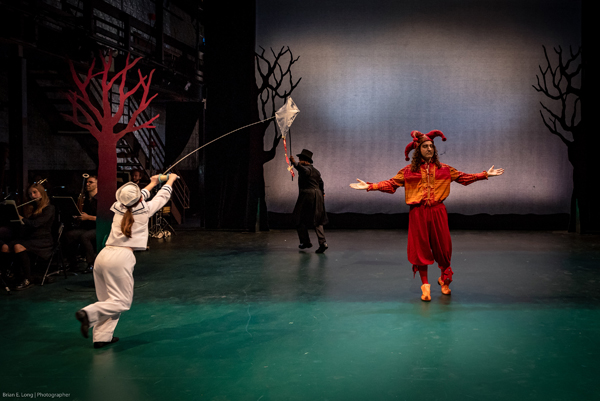
The idea was to create a believable and dynamic interaction between the kite and Petit Allan (Megan Vanacore), the young boy "flying" it. Photos by Brian E. Long.
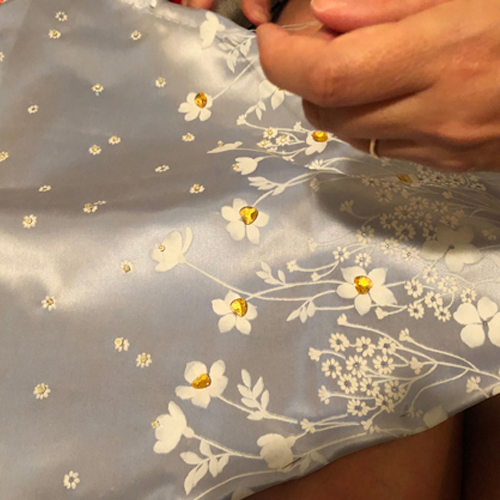
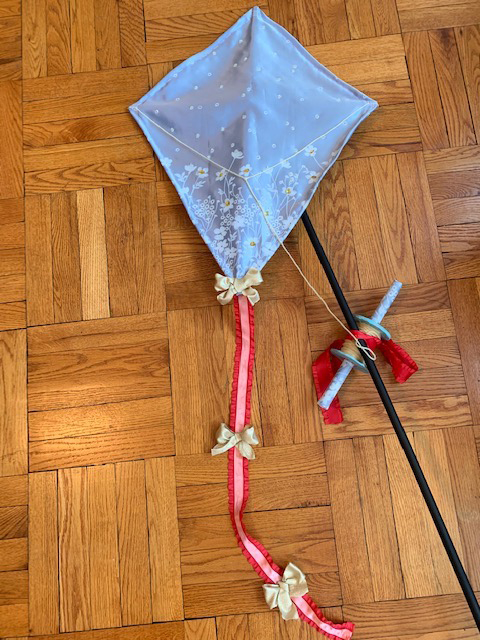
As the story described the kite as an extravagant gift to a high-born child, we decided to hand-sew it from patterned silk, adding individually attached gemstones, three different kinds of ribbon for the tail and a carefully detailed matching hand-reel. Photos by Leilani Marmelstein.
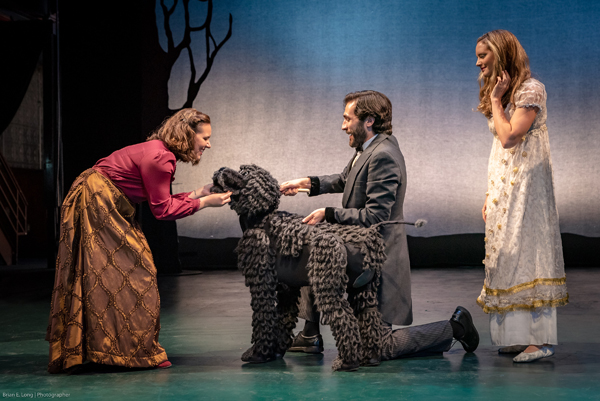
Princess Maleine (Elyse Kakacek, right) and her lady-in-waiting Aleta (Nicholle Bittlingmeyer, left) encounter a large, black water dog they dub Pluto, after the god of the underworld. The production team wanted the puppet to be operable by a single performer, singer Jonathan Harris (at center), who also played Maleine's late father. The implication would be that the dog was the father reincarnated as a canine guardian angel and protector. Having such a large and articulated puppet operated by just one person was a challenge that we were happy to rise to. Photo by Brian E. Long.
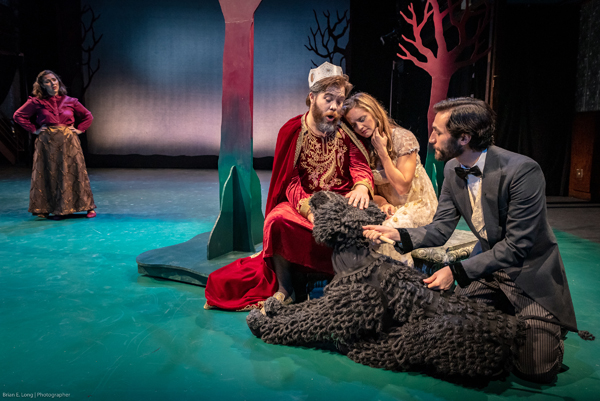
Pluto reclines at the feet of King Hjalmar (Eric Lindsey). The dog's body is supported via a handle on its back, and its head is controlled with a short rod held in the other hand. The legs are on axles, weighted and the back legs sprung at the knees so they can be swung back and forth by moving the body, and thus simulate running. They can also be swung completely down into a reclining position, as seen above, do a "sit" in between, and a low-headed "bow". Photo by Brian E. Long.
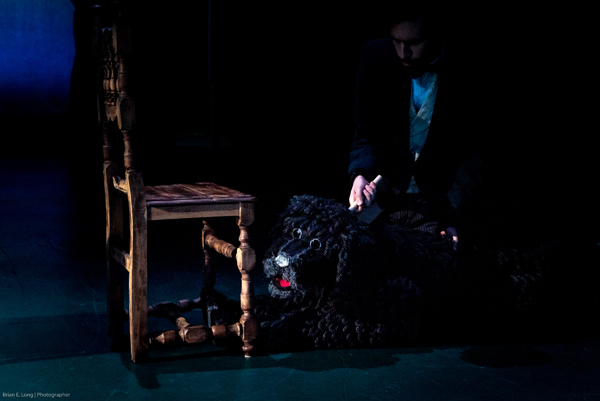
Pluto reacts with fear at the sound of thunder in the night. Because the libretto described the dog as completely black, we had an interesting design problem as we wanted to keep the character from becoming an unreadable silhouette in low light. Pluto's coat of thick yarn loops is thus not fully black,
but a combination of black and several shades of dark gray, with some even lighter shades added to delineate the face. The yarn loops were chosen as they suggested the stylized fur on medieval heraldic depictions of animals. Photo by Brian E. Long.
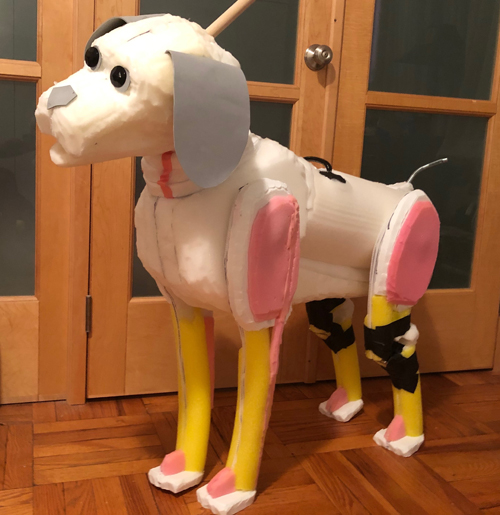
Underneath his spandex skin and yarn coat, Pluto has a jointed corrugated plastic skeleton surrounded by different thicknesses of carved polyfoam, ethyfoam rods and EVA foam, weighted ears that flop appropriately, and a bouncy metal spring on his rear to create a very happy tail-wag. Photo by Leilani Marmelstein.
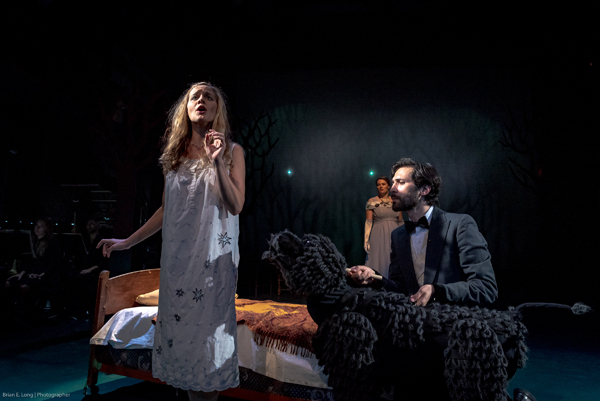
Pluto made an expressive and heartbreaking scene partner, and we were told he regularly stole the show. Photo by Brian E. Long.